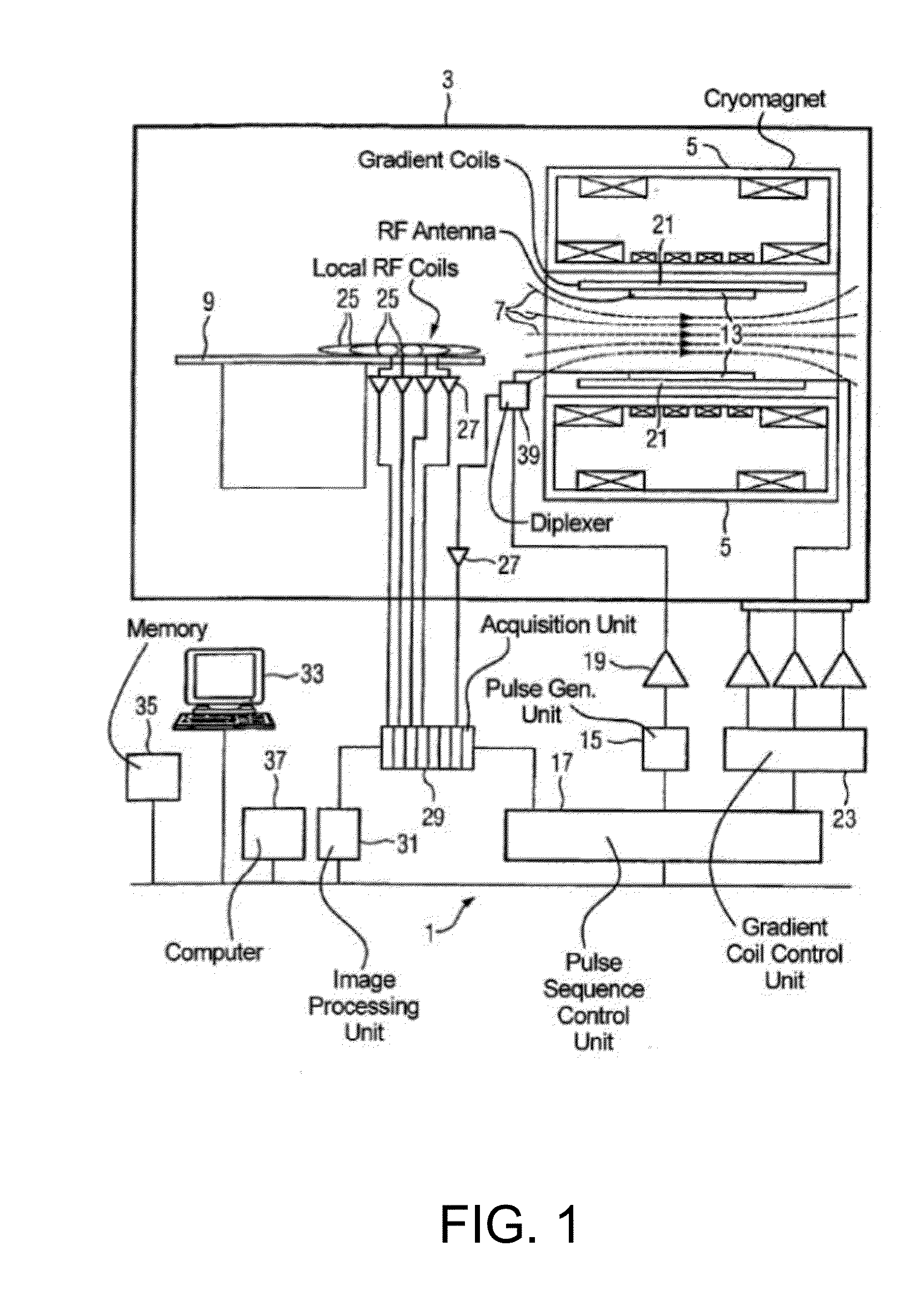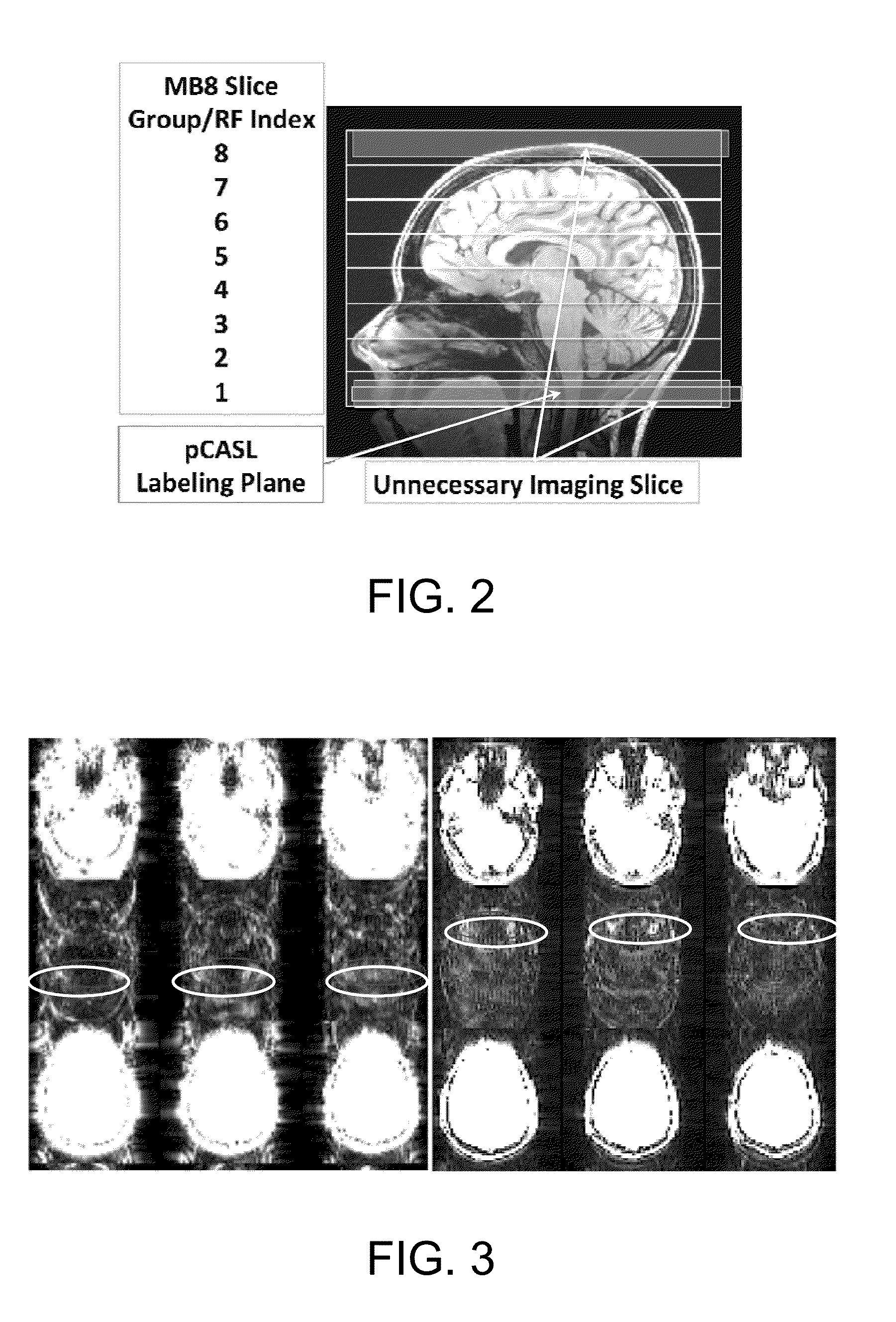Apparatus And Method For Multi-Band MR Imaging
a multi-band, mr imaging technology, applied in the direction of reradiation, measurement using nmr, instruments, etc., can solve the problems of affecting image quality, reducing the efficacy of the resulting perfusion image, and affecting the benefits of mb in quantitative imaging applications, so as to improve the effect of multi-band (mb) magnetic resonance imaging
- Summary
- Abstract
- Description
- Claims
- Application Information
AI Technical Summary
Benefits of technology
Problems solved by technology
Method used
Image
Examples
Embodiment Construction
[0016]Exemplary embodiments of the present disclosure can provide a magnetic resonance system for improved multi-band (MB) magnetic resonance (MR) imaging that uses adaptive techniques to generate RF image data and / or to reconstruct MR images therefrom.
[0017]The MR system includes a pulse generation unit, pulse sequence control unit, a radio-frequency amplifier, and one or more RF antennas, such as a body coil, that are further configured to generate and emit RF excitation pulses to excite nuclear spins. The MR system further includes magnetic gradient coils, which may be oriented along the three primary axes (x-y- and z-directions). Other or additional orientations of the magnetic gradient coils can be used in further embodiments. A gradient coil control unit can be provided to supply pulsed current to the magnetic gradient coils to generate transient gradient magnetic fields superimposed on the static base magnetic field B0. The gradient coil control unit can also communicate with...
PUM
 Login to View More
Login to View More Abstract
Description
Claims
Application Information
 Login to View More
Login to View More - R&D
- Intellectual Property
- Life Sciences
- Materials
- Tech Scout
- Unparalleled Data Quality
- Higher Quality Content
- 60% Fewer Hallucinations
Browse by: Latest US Patents, China's latest patents, Technical Efficacy Thesaurus, Application Domain, Technology Topic, Popular Technical Reports.
© 2025 PatSnap. All rights reserved.Legal|Privacy policy|Modern Slavery Act Transparency Statement|Sitemap|About US| Contact US: help@patsnap.com



